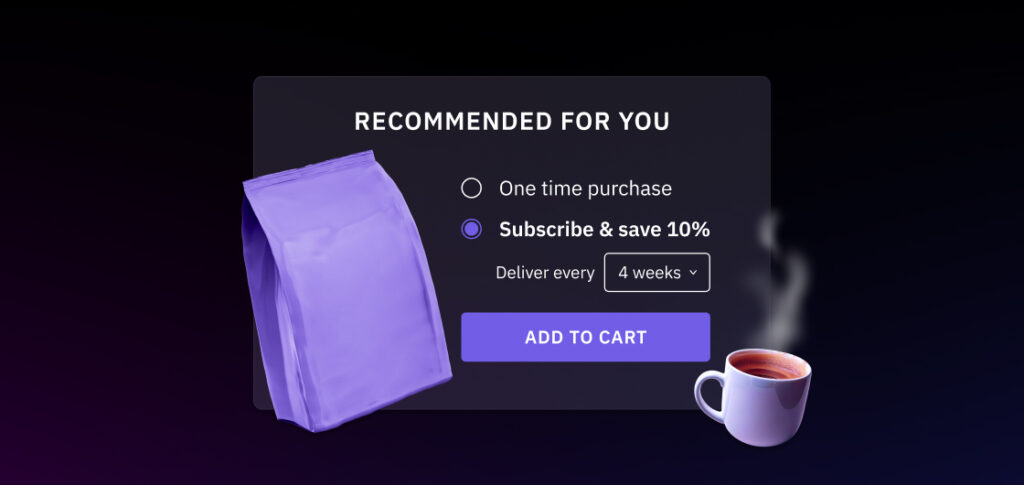
- Customer Retention
- Product
- Quizzes
Boost subscription sales with new Subscription Recommendations
Katie Vaught | Mar 18, 2025
Dec 23, 2024 | 14 minute read
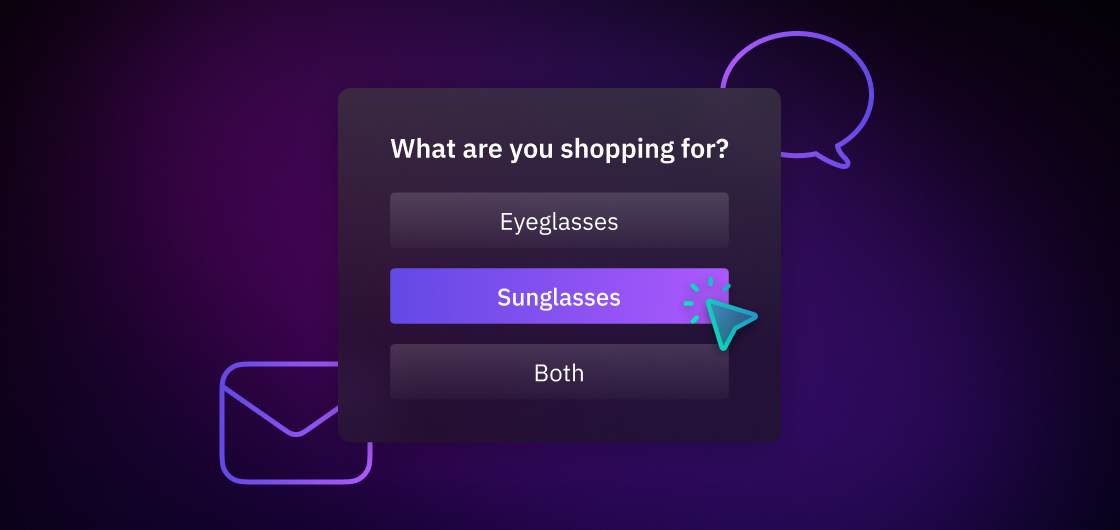
Megan Wenzl
Content Marketing Manager
Quiz marketing funnels are an excellent way for brands to connect with their audiences, learn more about their customers, and increase conversions. By designing quizzes for specific audiences, choosing interesting topics, and strategically placing them across websites, social media, or paid ads, brands can create interactive experiences that simplify the buying process and build customer trust. Okendo Quizzes make it easy to create and launch quizzes that strengthen customer relationships and grow revenue.
Over the past decade, quiz funnels have gained popularity as a creative and effective way for brands to connect with their customers. By combining customer interaction with useful insights, this tool fits naturally into sales funnels and has proven it can turn casual shoppers into loyal customers.
A quiz funnel is an interactive marketing tool that helps brands connect with potential buyers by asking a series of questions and using their responses to guide them toward purchasing a product.
Quiz funnels are effective because they provide something of value to both customers and brands—helping buyers find solutions while giving brands useful insights into their audience’s unique preferences and specific needs.
Although quiz funnels work across a variety of industries and brand goals, they’re particularly helpful for ecommerce brands because they help shoppers find options that meet their exact needs. Whether it’s addressing specific challenges they face, recommending products that match their preferences, or simplifying choices around multiple options, quizzes make the shopping experience more purposeful and enjoyable.
The biggest difference between a quiz funnel and a traditional sales funnel is how it makes the customer experience feel. A regular sales funnel follows a one-size-fits-all approach—straightforward and predictable for every shopper. Buyers move through the same steps, view identical content, and receive the same solutions or offers, regardless of their individual needs or preferences.
Quiz funnels, on the other hand, take a much more personalized approach. They ask targeted questions that and ultimately deliver a customized recommendation. This process feels more like a one-on-one conversation, building trust and a stronger connection between the brand and the buyer. For ecommerce brands, this is especially effective and leads to higher conversion rates and repeat customers.
Yes, quiz funnels work. Quiz funnels are a powerful way to grow your audience while providing an engaging and personalized experience for potential customers. By asking targeted questions, you learn more about their interests and preferences, while simultaneously gathering valuable contact information. The data you collect gives you the opportunity to follow up with personalized offers or solutions, helping you turn those leads into loyal customers.
Quiz funnels provide multiple advantages, particularly in engaging your audience and gaining deeper insights into their preferences. Core benefits include:
One of the greatest strengths of quizzes is their flexibility. They can be adapted to meet the unique goals of any industry or brand. Whether it’s recommending products to meet specific needs, generating leads, or helping shoppers feel more confident in their decisions, quizzes can be customized to fit marketing objectives. Let’s take a closer look at how some brands have used Okendo Quizzes to engage with their customers and achieve their goals.
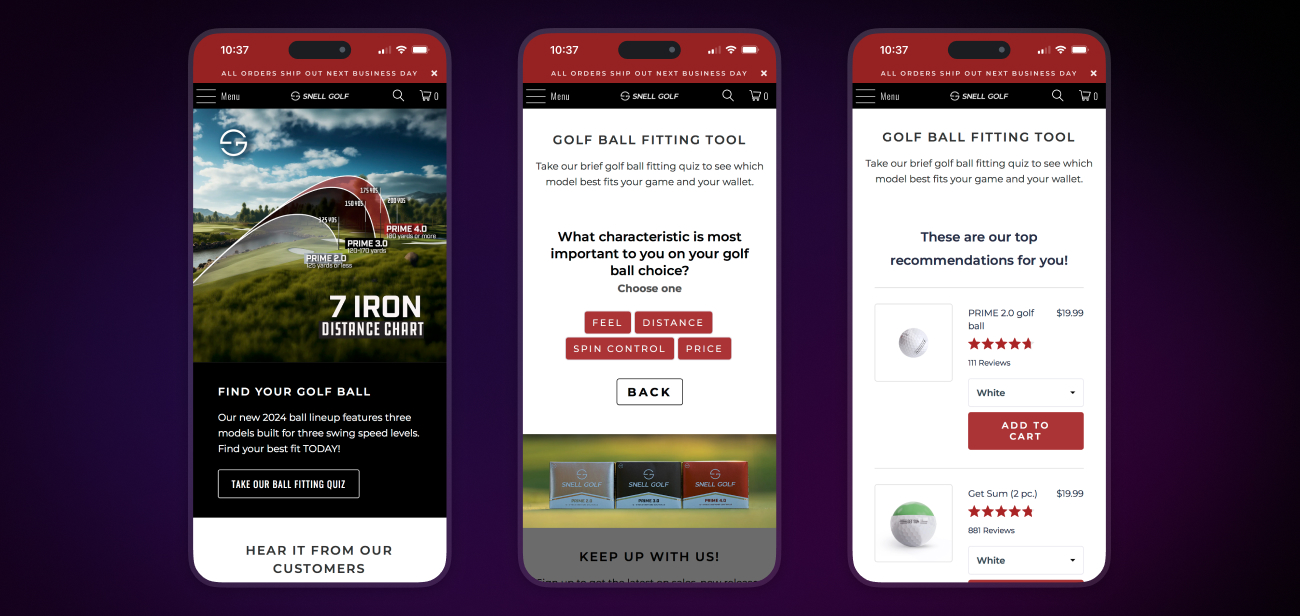
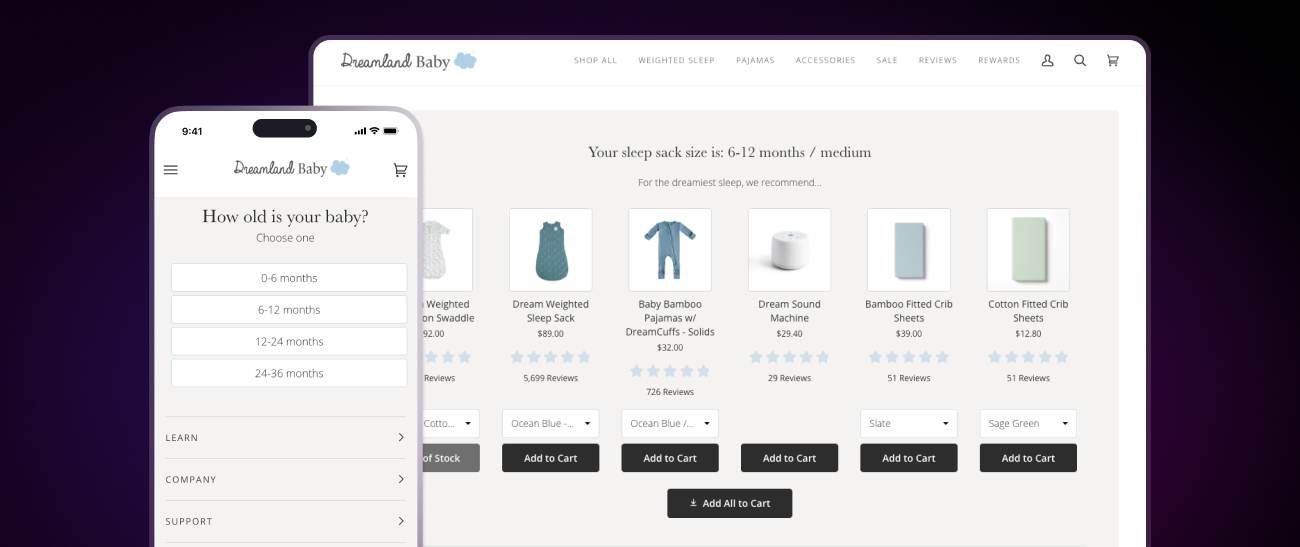
The success of these Quizzes came down to a few important strategies. Each quiz provided personalized recommendations that felt relevant and useful, giving customers options suited to their specific needs. By addressing common questions and concerns, the Quizzes helped customers feel more confident in their decisions and made the buying process easier. They also created an interactive and approachable experience that built trust and encouraged connection with the brand.
Okendo’s product suite is designed to help brands build stronger customer relationships that lead to lasting loyalty and higher revenue. With products like Reviews, Surveys, Referrals, and Loyalty, Okendo makes it easy for brands to collect customer data, personalize the shopping experience, and strengthen engagement, all of which contribute to more sales.
By asking targeted questions and providing personalized recommendations based on customer responses, Okendo Quizzes makes the shopping experience feel relevant and purposeful.
For example, a quiz might help a brand recommend products that match personal preferences or solve specific challenges. When combined with other tools (like Surveys to gather feedback, or Reviews to build trust), Quizzes can help guide buyers toward completing their purchase and improve the overall performance of your sales funnel.
Okendo breaks down how to design a quiz marketing funnel into three straightforward steps—creating the quiz, promoting it, and analyzing the results. This clear process helps brands better understand their customers, create stronger engagement, and ultimately, increase conversions.
Before jumping into the quiz design process, however, there are a few important steps you should take to set yourself up for success. Careful planning will help your quiz not only connect with your audience but also achieve your brand goals. Let’s break it down step by step.
The foundation of any successful quiz starts with knowing exactly who it’s for. Whether you’re targeting your entire customer database or focusing on a specific group, understanding your audience helps you create a quiz that speaks directly to their interests and needs, and creates a more engaging experience overall.
For example, an accessories brand might segment its audience according to style preferences or lifestyle habits. A quiz might include questions about colors, fit, and special features to help the brand recommend options that meet each group’s specific tastes.
Start by defining your audience into clear personas based on shared traits like demographics, shopping habits, or goals. This will help you focus on what matters most to each group and ask questions that connect with their specific interests. Are they looking for product recommendations, tips for solving a problem, or advice to guide their decisions? By keeping these priorities in mind, you can write questions that address their concerns and encourage participation.
If you’re unsure about your audience’s preferences, tools like Okendo Surveys or Reviews can provide valuable insights to guide your quiz design. These tools give you a clearer picture of what your customers care about and what kind of questions would feel relevant and helpful to them.
Once you know your audience, the next step is deciding where your quiz will make the biggest impact. The location should match where your audience spends the most time and how they typically interact with your brand.
For instance, a sports and outdoors company might promote a quiz on social media to help adventure-seekers identify the best gear for hiking or beach trips. Featuring the quiz as a homepage banner or pop-up can also capture attention when visitors are already exploring your site.
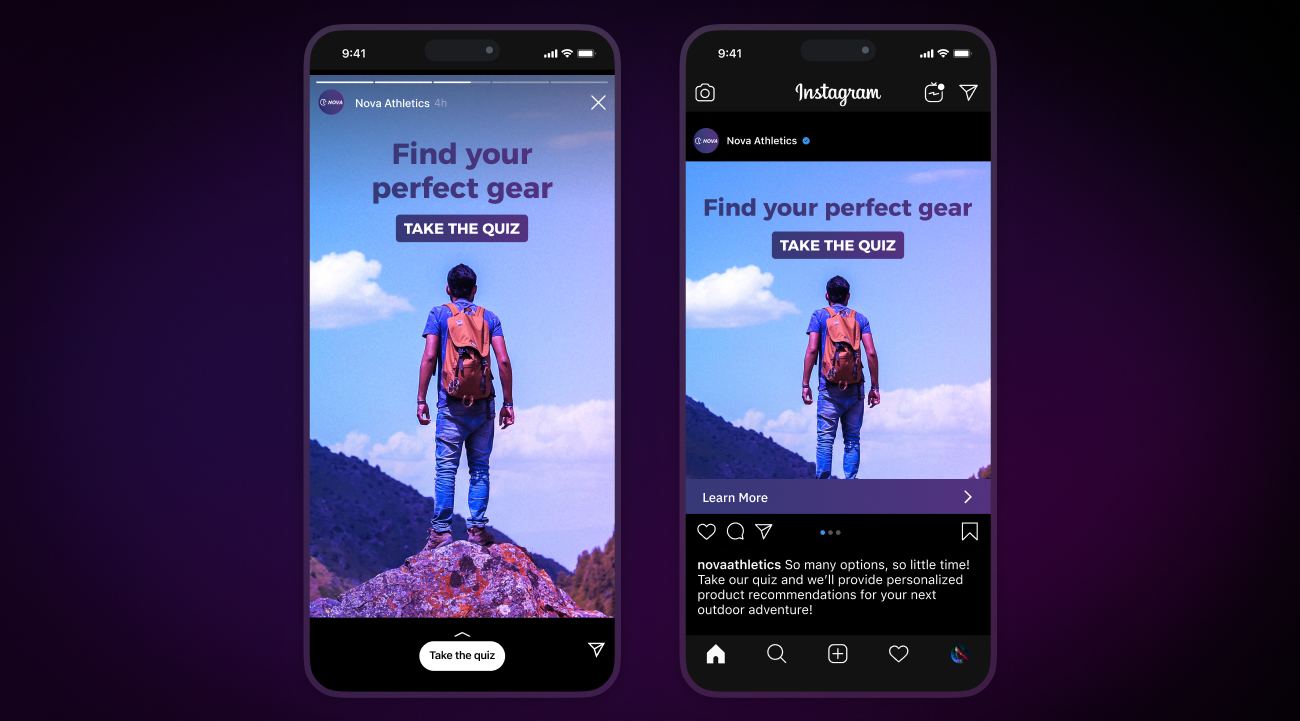
For ecommerce websites, you might feature the quiz on your homepage to make it easy for visitors to find. You also might consider adding a pop-up or banner to catch their eye. Social media platforms like Instagram or Facebook are also great for promoting quizzes, especially if your audience is active on those channels. For example, you could share an attention-grabbing post with a call-to-action inviting users to take the quiz.
If you’re looking to attract new customers, running a paid ad campaign can help bring new eyes to your quiz. Thinking strategically about placement will help your quiz get in front of the right people at the right time.
The topic of your quiz is just as important as its audience and placement. Choosing a strong topic can capture attention and motivate people to participate, while an unappealing one might be ignored.
For example, a home goods brand could develop a quiz to help customers choose bedding that complements their bedroom decor. The quiz might ask about their favorite colors, furniture style, or the overall vibe they’re going for, guiding them toward options that suit their space and make the shopping experience more personal and helpful.
Start by analyzing your existing content to see what has performed well in the past. Review your blog posts, social media updates, and email campaigns to identify themes or topics that resulted in strong engagement or increased sales. This can give you clues about your audience’s interests.
Next, take a look at competitors in your industry. Are they using quizzes or creating other content that’s getting great engagement? This type of research can inspire ideas that might work well for your audience. Finally, use keyword research tools to identify trending topics in your industry that are similar to your audience’s interests and what your brand offers. These trends can help make your quiz feel timely and relevant.
Learning how to create a quiz marketing funnel gives you the tools to connect with your audience, guide them toward the next step in the buyer journey, and ultimately, increase sales. To make it work within your larger marketing strategy, start by identifying your goal. Whether you want to generate leads, offer personalized recommendations, or simplify the buying process, having a clear purpose will help you create a more focused and effective quiz. Then think about where the quiz fits into your overall sales funnel. Are you using it to attract new customers? To nurture leads by offering helpful insights? Or to follow up on responses and encourage buyers to make a purchase? Understanding its role helps you develop a strategy that aligns with your larger operational goals.
Quizzes can also be a valuable way to collect feedback from your customers. By asking questions about their preferences or what they feel is missing, you can find ways to expand your product line or improve what you already provide. This feedback not only gives you a clearer picture of your audience’s expectations but also shows that you value their input, helping you build stronger relationships.
Making your quiz engaging isn’t just about asking fun questions—it’s about creating a user-friendly experience while also gathering information that you can use to strengthen and grow your brand. Here are some practical strategies and tips to help you get the most out of your quiz:
By applying these strategies, you can create a quiz that feels more engaging and rewarding for your audience while also giving your brand valuable insights to work with.
Quizzes aren’t a one-and-done tool. To stay effective, they should grow and change as your audience and brand does. Regular updates help keep your quiz relevant and engaging for new visitors while also highlighting new products or reflecting current trends. Similarly, changing questions, updating visuals, or offering different incentives can renew interest among returning customers whose preferences or needs may have changed.
Updating your quiz also gives you a chance to learn from its past performance. By reviewing customer responses and tracking completion rates, you can make small updates that improve the experience and encourage more participation. Whether it’s adjusting the tone of your questions, restructuring the layout, or testing a different location, keeping your quiz fresh helps it stay effective over time.
A/B testing is one of the most powerful ways to refine your quiz funnel and learn what works best with your audience. It lets you experiment with different styles, formats, or incentives, and use what you learn to design a quiz that better resonates with your audience.
For example, you might compare two versions of the same quiz: one featuring lighthearted, conversational questions and another with more direct, product-specific language. By analyzing completion rates and feedback, you can see which style appeals more to your audience. Similarly, testing different incentives—such as offering a discount in one version versus a free resource in another—can also reveal what motivates your audience to participate.
Even small details, such as quiz placement, can make a difference. Consider testing one version of the quiz as a homepage banner and another as a pop-up, then track which option gets more participation. These small experiments give you a clearer sense of what your audience prefers and help you adjust your approach.
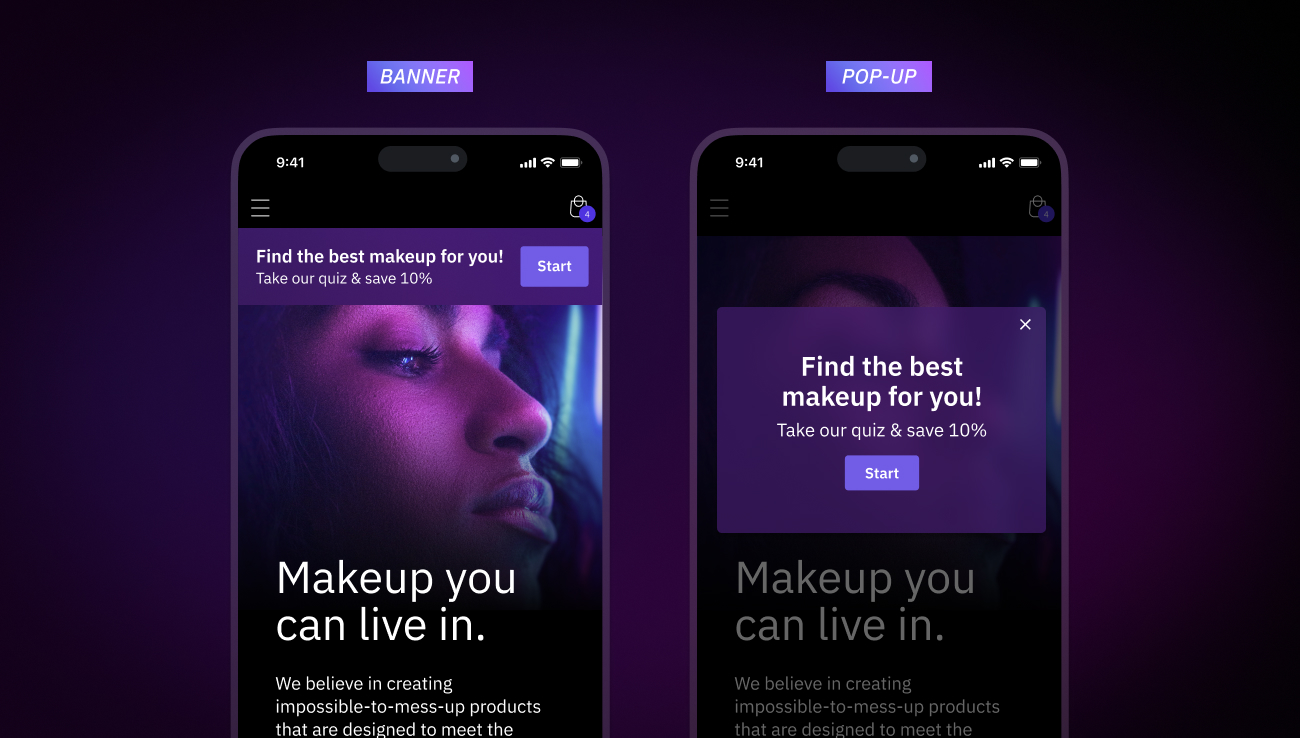
A/B testing allows you to continually improve your quiz funnel, making it more engaging and aligned with your audience’s expectations. With each adjustment, you’ll be able to create a quiz experience that feels more relevant and leads to stronger participation and better results.
Quizzes aren’t just a way to engage customers in the moment. They’re also a valuable tool to strengthen your retargeting efforts. The data collected from a quiz allows you to follow up with participants in a way that feels specific to them.
Quizzes can also help re-engage customers who didn’t make a purchase initially. Following up with personalized recommendations or exclusive offers gives them a reason to revisit your site and complete their purchase. Using quiz data for retargeting not only increases conversions but also demonstrates that your brand understands what your customers are looking for.
Quiz marketing funnels are a smart way to connect with your audience, learn more about their needs, and turn potential leads into long-term customers. Their versatility makes them useful across a variety of industries—whether you’re recommending products, addressing common customer questions or concerns, or building stronger relationships through more personalized experiences.
Creating a quiz funnel doesn’t just provide your brand with valuable data; it also helps customers feel confident in their decisions by offering clear solutions that meet their specific needs. By incorporating quizzes into your marketing strategy, you can make the shopping process easier, increase conversions, and build long-lasting trust in your brand.
What makes quiz funnels even more impactful is their adaptability. As your audience grows or your product line evolves, your quizzes can change with them, staying relevant and useful no matter how your brand develops. With tools like Okendo Quizzes, you have the opportunity to create interactive experiences that deepen your connection with customers and support your brand’s growth.
Related articles
Ready to learn more?